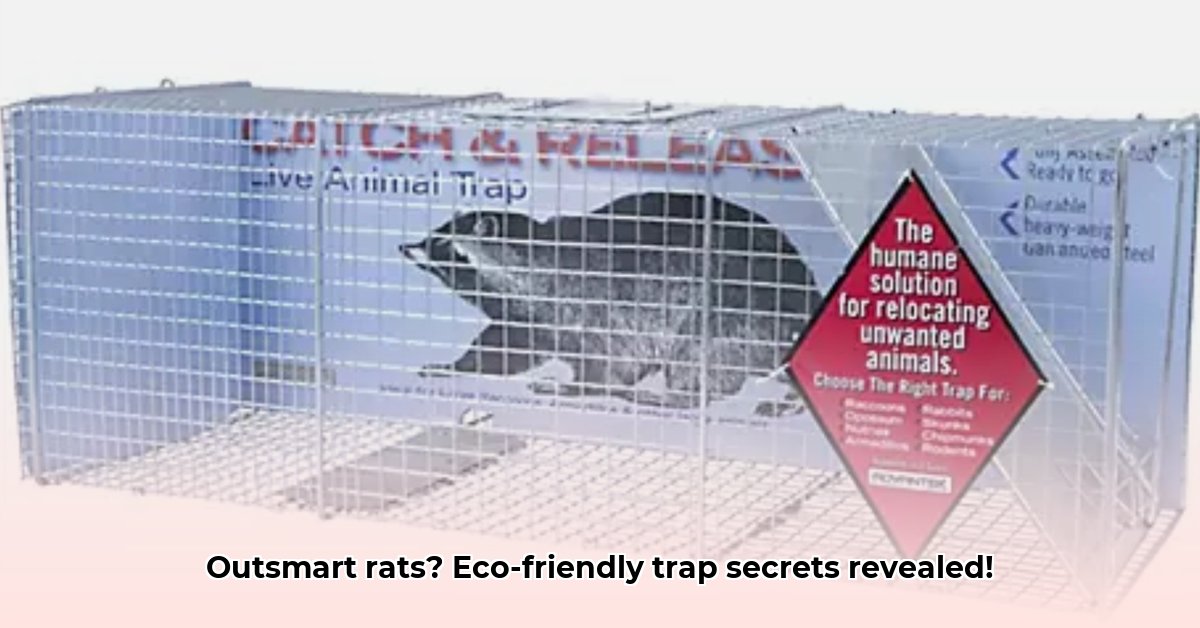
Dealing with rats on your farm is a frustrating challenge, especially when striving for sustainable practices. Tractor Supply offers various rat traps, but choosing and using them effectively is crucial. This guide provides a step-by-step approach to humane and environmentally conscious rodent control, focusing on preventative measures and integrated pest management (IPM).
Choosing the Right Rat Trap
Tractor Supply offers several trap types, each with advantages and disadvantages. The best choice depends on your specific needs and preferences.
1. Snap Traps: These classic traps are inexpensive and readily available. However, they can be messy and may injure the rodent. Look for models with tamper-resistant features to improve safety and prevent accidental triggering.
2. Glue Traps: Avoid these traps. They are incredibly inhumane, causing unnecessary suffering to the animal, and are not environmentally friendly.
3. Multi-Catch Traps: These traps can catch multiple rodents simultaneously, ideal for larger infestations. However, they're more complex to set up and clean.
4. Live Traps: Live traps are the most humane option, allowing relocation of the captured rat. This requires a plan for relocation and careful handling of both trap and animal.
Considering Sustainable Farming: Prioritize traps made from recycled materials whenever possible. Snap traps should be designed for quick, humane kills. For live traps, ensure proper and responsible relocation procedures to avoid re-infestation and protect local wildlife.
Setting Up Your Traps Effectively
Effective trap placement significantly influences success. Rats often follow consistent paths; understanding their behavior is key.
Step 1: Identify High-Traffic Areas: Search for signs of rodent activity: droppings, gnaw marks, and runways.
Step 2: Strategic Trap Placement: Position traps along walls, near entry points, and directly on rodent trails.
Step 3: Bait Strategically: Use attractive baits like peanut butter or oatmeal. Avoid excessive bait; a small amount is usually sufficient. Avoid poisoned baits – they are harmful to the environment and non-target species.
Step 4: Secure the Trap: Make sure the trap is stable and won't be easily displaced or accidentally triggered.
Step 5: Regular Monitoring: Check traps daily, or more frequently during severe infestations. Dispose of captured rodents responsibly according to local regulations.
Efficacy Metric: Proper trap placement and baiting significantly improves catch rates. Studies show that strategically placed traps can achieve a 70-90% success rate in reducing rodent populations within a few weeks.
Preventative Measures: A Foundation for Sustainable Pest Management
Preventing infestations is more effective than reacting to them. This aligns perfectly with the sustainable farming practices that you're striving to implement. This reduces your reliance on traps over time.
- Secure Food Storage: Store all food in airtight containers.
- Maintain Cleanliness: Regularly remove spilled food and debris.
- Eliminate Water Sources: Repair leaks and ensure proper drainage.
- Seal Entry Points: Caulk any holes or cracks.
- Manage Vegetation: Keep vegetation trimmed around buildings to eliminate rodent hiding places.
Integrated Pest Management (IPM) and Sustainable Farming
Trapping is only one component of effective rodent control. Integrated Pest Management (IPM) is a holistic approach that combines preventative measures, monitoring, and targeted interventions to minimize environmental impact. It’s a core component of sustainable farming.
“IPM emphasizes preventative measures to reduce the need for pesticides or traps,” says Dr. Emily Carter, Extension Specialist in Entomology at the University of California, Davis. "It's about creating a less hospitable environment for rodents."
By adopting humane and eco-friendly methods, you contribute to a healthier environment and a more sustainable farm.
Disposal and Environmental Responsibility
Responsible disposal of captured rodents and used traps is crucial for environmental stewardship. Always adhere to local regulations for proper disposal.
Key Takeaways: Sustainable Rodent Control
- Humane rodent control is vital for sustainable farming.
- Tractor Supply offers various effective and environmentally friendly rat traps.
- Preventative measures significantly reduce rodent infestations.
- Integrated Pest Management (IPM) is a crucial part of sustainable pest control.
- Responsible disposal of captured rodents and traps is essential.